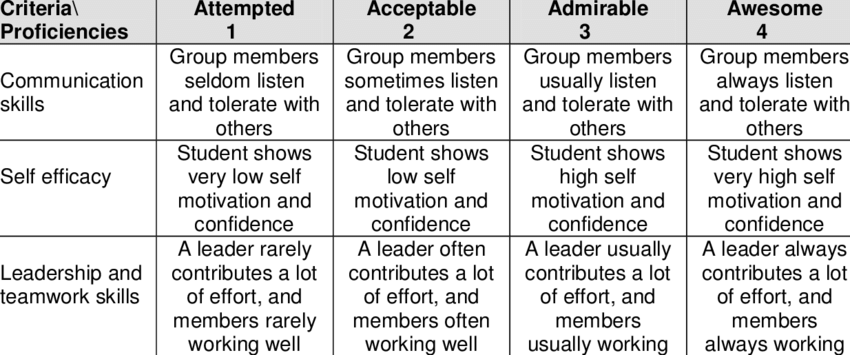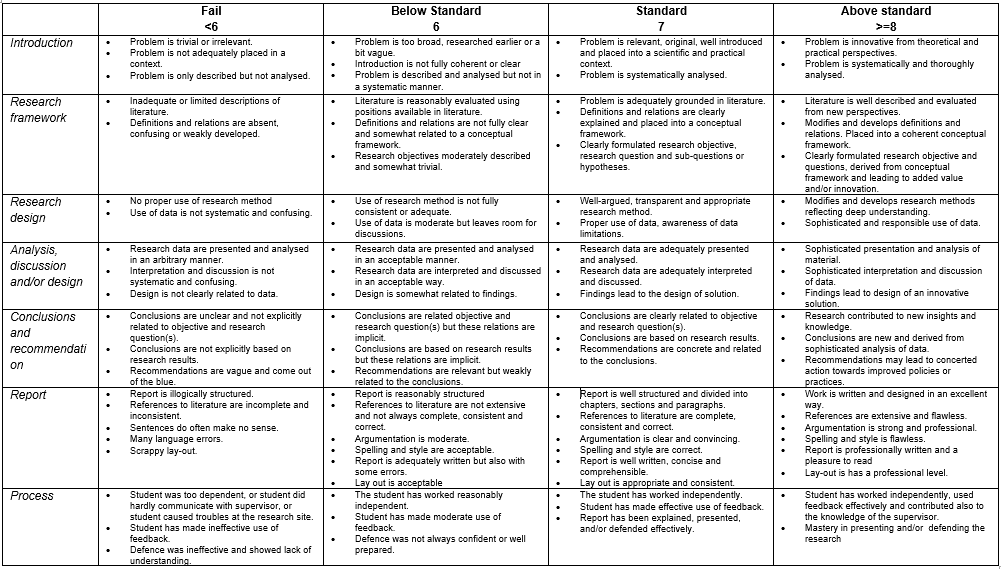Formatief en uitgebreide (alomvattende) toetsing
Sommige grotere of complexere examens en beoordelingsstructuren die we gebruiken passen mogelijk niet in de huidige beschikbare praktijken of de werkwijze van online schriftelijke of mondelinge examens. In dit soort gevallen kunnen docenten en afdelingen besluiten alternatieve toets- en beoordelingsmethoden te gebruiken. Voor deze alternatieven hebben we geen standaard templates, omdat ze sterk afhankelijk zijn van (de structuur van) het vak. Het kan meer voorbereidingstijd vergen om dit ontwikkelen. Formatief toetsen en een uitgebreide (alomvattende) beoordeling kan waarschijnlijk worden opgezet in uw eigen Nestor-cursus (in plaats van een afzonderlijke examencursus).
Voor verdere hulp kunt u altijd contact opnemen met Educational Support and Innovation.
Formatief toetsen
Formatief toetsen heeft tot doel het leren van studenten te verbeteren door het op te delen in kleinere stappen en constructieve feedback op elk van de stappen te geven. Dit is heel anders dan summatief toetsen, waarbij studenten aan het einde van een cursus wordt gevraagd om te laten zien dat ze de beoogde leerdoel hebben behaald. Formatief toetsen is bedoeld om het leerproces te stimuleren. Formatieve toetsing staat ook bekend als “Assessment for learning”, terwijl summatieve toetsing bekend staat als “Assessment of learning”.
Veel docenten gebruiken al formatieve beoordelingsmethoden in hun cursussen. Op dit moment kunt u, vanwege het online onderwijs, overwegen om (nog meer) te focussen op het leerproces in plaats van op de/het afsluitende summatieve toets/tentamen.
In de volgende tabel worden de belangrijkste verschillen tussen de twee vormen van toetsing uiteengezet:
| Toetsen voor een eindcijfer (summatief) 'Assessment of learning' | Toetsen voor leren (formatief) 'Assessment for learning' | |
|---|---|---|
| Doel | Eindoordeel / eindcijfer | Leren verbeteren |
| Informeren van | Studenten en docenten over het slagen voor het vak | Studenten en docenten over het leren van de studenten |
| Focus op | Of studenten beoogde leerdoelen hebben behaald | Hoe goed studenten op weg zijn om de leerdoelen te behalen |
| Moment | Na het leren / afsluiting van een vak | Gedurende het leerproces |
| Rol/taak van docent | Organiseren van de toetsing, interpreteren resultaten, toetsen / opdrachten maken, cijfers geven | Toetsen & opdrachten ontwikkelen, constructieve feedback geven, informeren en engageren van studenten |
| Rol/taak van student | Voldoen aan norm | Gebruikt resultaten om leren te verbeteren, doelen bij te stellen |
Alomvattende beoordeling
Bij een alomvattende beoordelingsstructuur wordt al het werk van een student meegewogen. Studenten leveren gedurende een vak kleinere opdrachten in die beperkt of niet meetellen voor het eindcijfer; de beoordeling/feedback is vooral formatief. Tijdens de looptijd van het vak breidt de alomvattende beoordeling zich stapsgewijs uit, waarbij eerder ingeleverd werk minder meeweegt voor het eindcijfer dan later ingediend werk. Dit geeft studenten de mogelijkheid om hun studeren aan te passen aan de feedback die ze krijgen en het beloont de verbeteringen die ze daarin aanbrengen.
Voorbeelden van alomvattende beoordelingsmethoden zijn portfolio’s, gefaseerd geschreven papers en grotere individuele- of groepsprojecten. U kunt voor elk onderdeel van het grotere product verschillende of dezelfde rubrics gebruiken. In het laatste geval kunnen studenten zien hoe hun werk in de loop van de tijd verbetert. U kunt er ook voor kiezen om analytische rubrics (waarbij de criteria afzonderlijk worden gescoord) te gebruiken voor deelopdrachten en een meer alomvattende rubric (die het geheel van de leerresultaten scoort) voor het eindproduct. Zie hieronder voor meer informatie en voorbeelden van alomvattende rubrics.
Alle vormen van de alomvattende beoordeling moet in proportie zijn met de beoogde leerdoelen van het vak en studenten in de gelegenheid stellen te laten zien dat ze de beoogde leerdoelen hebben behaald.
Voorbeelden
Hierbij kunt u denken aan:
- Groepsopdrachten, zoals een gezamenlijke papers of presentaties (via Blackboard Collaborate)
- Bijdrages aan een discussieforum, waar studenten hun kritische vaardigheden kunnen laten zien.
- Video-opdrachten, waarbij studenten iets kunnen laten zien dat ze hebben geleerd
- Studenten vragen tijdens het vak een steeds meer uitgewerkte versie van een paper te schrijven, waarbij ze op basis van ontvangen feedback een volgende versie maken
Beoordeling over cursussen
Een andere alternatieve beoordelingsmethode betreft een beoordeling op basis van resultaten over meerdere vakken. Studenten kunnen bijvoorbeeld werken aan een groter geheel (project) dat bestaat uit de leerresultaten van twee (of soms meer) gerelateerde vakken. Aangezien dit over het algemeen grotere projecten zijn, zijn ze idealiter opgedeeld in stappen, met daartussen formatieve feedback. Omdat het om meerdere vakken gaat en de opzet kan verschillen, zijn er meerdere docenten betrokken die de begeleiding en beoordeling onderling moeten afstemmen/coördineren. Bij een dergelijke manier van beoordelen hebben de vakken (deels overlappende) leerdoelen.
Rubrics
Een rubric is een hulpmiddel bij de beoordeling van. Een rubric heeft het uiterlijk van een tabel (zie figuur 2) waarin beoordelingscriteria systematisch zijn gekoppeld aan de beoogde leerdoelen. Deze criteria geven beknopte beschrijvingen van de verschillende eisen waaraan het werk van de student moet voldoen. Er zijn verschillende soorten rubrics: holistisch (alomvattend, extensieve) rubrics en meer analytische rubrics , beide worden ze gebruikt om:
- Consistentie beoordeling te bewerkstelligen, vooral als er meer dan één docent bij de beoordeling betrokken is
- Studenten vooraf duidelijkheid te geven over wat de docent verwacht bij een opdracht
- Tijd te besparen; het systematische en welomschreven karakter van de rubric bespaart tijd voor de docent
- De transparantie voor studenten te vergroten door hen te laten zien hoe leerdoelen worden gescoord in opdrachten
Het verschil tussen holistische- en analytische rubrics is dat holistische rubrics een meer algemene beoordeling van één opdracht is. In dergelijke rubrics worden complexe vaardigheden en kennis vaak beschreven door hun belangrijkste componenten. Analytische rubrics daarentegen bevatten per opdracht op een meer gedetailleerd niveau criteria. Studenten worden afzonderlijk beoordeeld op alle afzonderlijke en gedetailleerd uitgeschreven criteria, wat betekent dat elke individuele prestatie-indicator onafhankelijk van de andere wordt bekeken. Hieronder hebben we de voor- en nadelen van beiden opgesomd.
Holistische Rubrics
Voordelen
- Effectief om complexe denkvaardigheden van hogere orde te scoren
- Effectief om de algehele prestaties van studenten in een vak te beoordelen
- Geschikt om de voortgang van studenten tijdens het vak te beoordelen
- Tijdbesparend
Nadelen
- Risico op meer subjectieve beoordeling omdat docenten (en studenten) criteria en succes anders kunnen interpreteren
- Minder geschikt voor gedetailleerde feedback of formatieve beoordeling
- Mogelijk minder geschikt voor beginnende docenten
- Vereist meer afstemming tussen beoordelaars als er meer dan één beoordelaar bij de beoordeling betrokken is

Analytische rubrics
Voordelen
- Geschikt voor (peer) feedback en formatieve beoordeling omdat het gedetailleerde criteria bevat
- Geeft duidelijke verwachtingen aan studenten
- Hogere interbeoordelaarsbetrouwbaarheid wanneer meer dan één docent bij de beoordeling betrokken is
Nadelen
- Kan mogelijk worden gezien als een checklist door docenten en studenten
- Onafhankelijke scoring van criteria kan leiden tot een verkeerde match tussen de uitkomst van de analytische rubric en de algehele (meer holistische) indruk van de docent
- Kan de context en complexiteit waarin een taak is uitgevoerd mogelijk niet goed doen

Voorbeelden van toetsing
Academisch schrijven (Engels)
| Wat | Beoordeling | Cijfer | |
|---|---|---|---|
| Taak 1: Essay-voorstel |
Studenten schrijven een voorstel voor een onderwerp dat ze willen onderzoeken en waarover ze willen schrijven, inclusief een korte beschrijving en een voorlopige scriptieverklaring | Schriftelijke feedback docent | 5% |
| Taak 2: Projectplanning |
Studenten stellen hun eigen plan op voor hun onderzoek en het schrijven van essays, inclusief deadlines voor afzonderlijke delen | Studenten plaatsen plannen op het discussiebord en selecteren 5 beste voorbeelden uit hun leeftijdsgenoten | Geslaagd/niet geslaagd |
| Taak 3: Online cursus |
Studenten volgen een korte online cursus over het doen van wetenschappelijk onderzoek met behulp van de bibliotheekcatalogus en databases | Studenten nemen certificaat van voltooiing op in eindproduct | Geslaagd/niet geslaagd |
| Taak 4: Geannoteerde bibliografie |
Studenten doen onderzoek naar het onderwerp van hun keuze en noteren ten minste 3 bronnen voor hun bibliografie | De docent deelt voorbeelden en beoordeelt geannoteerde bibliografieën met behulp van een analytische rubric | 15% |
| Taak 5: Introductie schrijven |
Studenten schrijven inleiding op hun essay met duidelijke scriptieverklaring | Studenten ontvangen feedback van hun leeftijdsgenoten die de door de docent verstrekte en besproken rubric gebruiken | nvt |
| Taak 6: Twee paragrafen |
Studenten schrijven twee paragrafen met bronnen en met duidelijke onderwerpszinnen | Docenten beoordelen introductie plus twee alinea's met behulp van analytische rubric | 15% |
| Taak 7: Eerste concept |
Studenten breiden het essay uit tot een volledige eerste versie van hun essay | Studenten krijgen twee feedbackrondes: één door peers en één door docenten, elk met dezelfde rubric | 15% |
| Taak 8: Eind concept |
De student dient het definitieve concept van hun essay in, inclusief bibliografie | Studenten krijgen definitieve feedback van de docent met behulp van rubric | 50% |
Diagnostische en communicatieve vaardigheden (psychologie)
| Wat | Beoordeling | Cijfer | |
|---|---|---|---|
| Taak 1: Online cursus |
Studenten volgen een online cursus over reflectief schrijven | Studenten nemen certificaat van voltooiing op in eindproduct | Geslaagd/niet geslaagd |
| Taak 2: Methoden |
Studenten lezen en bespreken verschillende diagnostische en communicatiemethoden die in de psychologische praktijk worden gebruikt | Snelle quiz om kennis van methoden te testen | 10% |
| Taak 3: Rollenspel |
Studenten voeren drie rondes van rollenspel uit waarbij ze wisselen tussen psycholoog, patiënt en evaluator, waarbij ze oefenen met verschillende methoden. Deze zijn vastgelegd | Studenten moeten deelnemen aan elke ronde van rollenspel | nvt |
| Taak 4: Reflectieverslagen Eerste ontwerp (3x) |
Studenten bekijken video's en reflecteren in schriftelijke rapporten, waarbij ze zich bewust zijn van sterke en zwakke punten en beschrijven hoe ze methoden hebben toegepast of anders zouden toepassen | Het eerste reflectieverslag krijgt feedback van de docent, de andere twee van collega's, met behulp van een uitgebreide rubric | 15% voor het indienen van een concept |
| Taak 5: Reflectieverslagen Definitief ontwerp (3x) |
Studenten dienen definitieve reflectieverslagen in bij docenten | Docent beoordeelt rapporten met een holistische rubric | 25% voor elk rapport |
| Laatst gewijzigd: | 18 juni 2020 09:34 |
